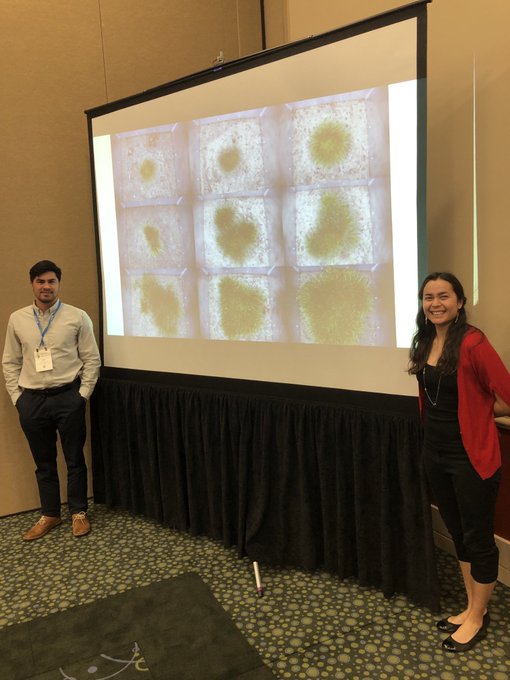The Turfgrass Science team from the University of Minnesota was well-represented at this year’s ASA-CSSA-SSSA Annual Meeting held on November 7-10, 2021 in Salt Lake City, UT. Two of our graduate students, Nicole Mihelich and Joan Barreto Ortiz, gave oral presentations there. Below are their presentation titles and abstracts.
Characterizing the diversity of strong creeping red fescue sod component traits in the field
Presented by Nicole Mihelich (co-authors Dominic Petrella, Florence Sessoms, Laura Shannon, and Eric Watkins)
Tillers and rhizomes are important physiological features for turfgrasses, and may be traits deserving of more focus for cool-season turfgrass breeding. These two types of stems can allow for resilience and competitiveness in a lawn, and are thought to be helpful for sod production. Kentucky bluegrass is the predominant sod species in the Midwest and other cool-season areas; however, consumers would benefit from increased availability of fine fescue sod for lawns, roadsides, and other areas where low-input species would be useful. Strong creeping red fescue (Festuca rubra subsp. rubra) displays robust rhizomatous growth that parallels Kentucky bluegrass. The investigation of tillering and rhizome traits of this fine fescue species could help plant breeders develop new cultivars with enhanced sod forming ability. The objective of this project was to quantify tiller and rhizome production in a diverse set of strong creeping red fescue germplasm in a mowed spaced plant setting, including cultivars, breeding material, and unimproved collected germplasm. 254 entries that passed a minimum threshold for strong creeping red fescue DNA content were represented by a clone of a single genotype each in four blocks. We also included check cultivars of Kentucky bluegrass, slender creeping red fescue, hard fescue, and Chewings fescue. Plant plugs were grown in the greenhouse and transplanted to the field in fall 2020. Non-destructive aboveground phenotypic data was taken in November 2020 and every two months of the 2021 growing season for horizontal growth and daughter plant production. At the end of the season, destructive phenotypic data will be taken to quantify and characterize belowground rhizomatous growth. This study complements previous growth chamber studies of collected germplasm which revealed high variation in the measured traits. This diversity should be useful for breeders in the development of new cultivars of fine fescue for use in sod production systems.
Image analysis of inflorescence morphology in perennial ryegrass (Lolium perenne L.) to understand the genetics of seed shattering
Presented by Joan Barreto Ortiz (co-authors Eric Watkins and Nancy Jo Ehlke)
Besides being the major cause of yield reduction in perennial ryegrass (Lolium perenne L.), seed shattering is a difficult trait to quantify. Designing genetics studies towards improving seed retention requires robust and reliable methods instead of the subjective and imprecise visual estimates from conventional phenotyping. Image analysis reduces subjectivity, guarantees precision, and can provide large amounts of data to capture substantial phenotypic to facilitate gene mapping approaches. Inflorescence morphology determines seed yield and pleiotropically influences shattering in several grass species. Therefore, a holistic approach to understand morphology may result in higher heritability estimates and genetic gain in seed yield. Our preliminary studies showed that multivariate traits derived from image analysis of spike morphology were significantly associated with seed retention and yield-related traits. Our ongoing studies aim to estimate the heritability of such multivariate traits as well as seed retention and yield, measured quantitatively across a breeding population. In this talk, we will be presenting preliminary results from applying our imaging pipeline to field experiments, reviewing the current limitations of our imaging pipeline and how we aim to improve accuracy and robustness using machine learning techniques. We will also discuss the implications for breeding high-yielding cultivars and the potential deployment of imaging tools to facilitate crop management.
